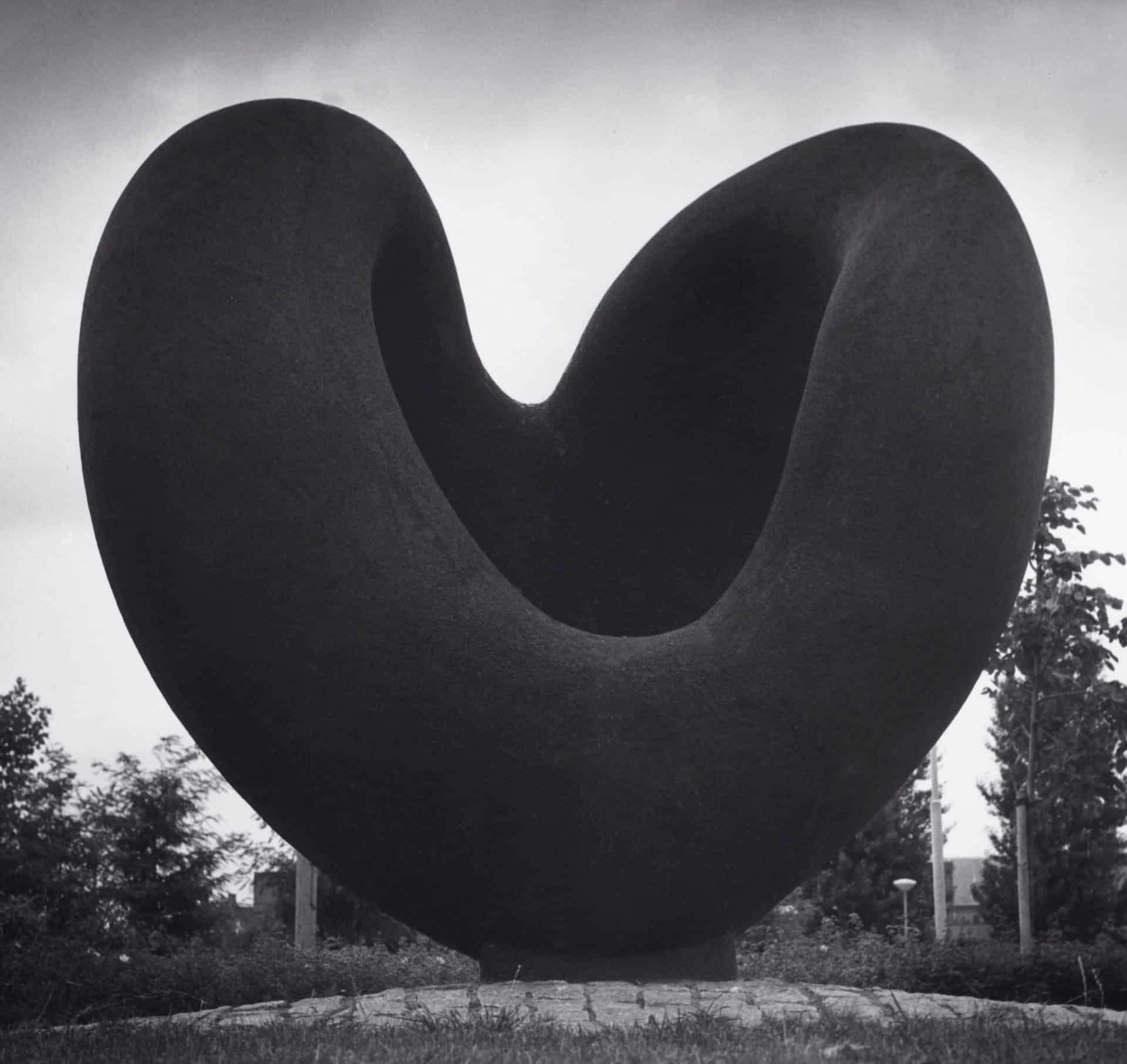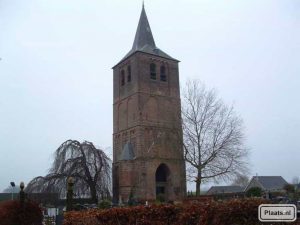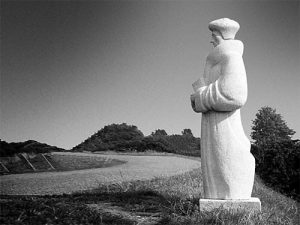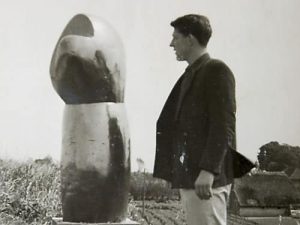
Hart van Beuningen, leven vanuit het Hart was hun droom.
Period Old Tower Winssen
On July 17th, 1935 Huub Kortekaas was born in ‘s-Gravenzande, the Netherlands, from a long line of market gardeners and became a school teacher. In 1960, at the age of 25 he met a kindred spirit in the humanist Erasmus and out of gratitude he created a monumental statue of him: his first work (which is now on the grounds of the University of Nijmegen). He moves into the “Ancient Tower” in the village Winssen ( Land van Maas en Waal) . ” The ‘Tower’ is situated at the foot of the Great Dyke separating it from the water-meadows along the river Waal. This environment will be his terrain till 1965. From 1961 onward archetypes of growth and fertility have arisen. Erasmus and the symbols created there are placed along the dyke and in the water-meadows; archetypes of growth and fertility; autonomical sculptures in their most basic form.
Successively there are; the Fertility Symbol (1961); Mother of the Dykes (1962); the Fertility-ring (1963); Gaya and the Phallus (1964), all of them closely related to his perception of nature in this period. After his ‘rebirth’ in the ‘Ancient Tower’ on Christmas Eve 1964, he resigns from his job as a teacher to integrate life and art; without any explicite ambition.






